Are you in search of a small and adorable dog breed to keep as a pet? If so, have you considered the Pekingese? This breed is a great option for those looking for a loyal and affectionate companion. With its unique appearance and charming personality, the Pekingese has become a popular choice among dog lovers. But before making a decision, it’s important to learn more about the breed’s characteristics, needs, and temperament to ensure that it’s the perfect fit for you and your lifestyle.
Breed Category: Toy
Country of Origin: China
Average Size:15-23 cm
Average Weight:3.2-6.4 kg
Average Life Span: 12-15 years
Grooming Requirements: High
Exercise Requirements:Low
History and Origin
The Pekingese is a small breed of dog that originated in China. This breed is known for its distinctive appearance, with a flat face, long coat, and short legs. The history of the Pekingese can be traced back to ancient China, where they were bred as companions for the imperial family.
The Pekingese was first introduced to the Western world in the 19th century, when British soldiers looted the Imperial Palace in Beijing during the Second Opium War. The soldiers brought several Pekingese dogs back to England, where they quickly became popular among the upper classes.
In the early 20th century, the Pekingese was recognized as a breed by the Kennel Club in the UK. The breed was also recognized by the American Kennel Club in 1906. Since then, the Pekingese has become a popular breed around the world, known for its loyalty and affectionate nature.
The Pekingese is a small dog, typically weighing between 7 and 14 pounds. They have a distinctive appearance, with a flat face, large eyes, and a long, flowing coat. The coat can come in a variety of colors, including black, white, fawn, and red.
The Pekingese is known for its loyalty and affectionate nature. They are often described as being stubborn and independent, but also very loving and devoted to their owners. They are also known for their bravery, and were once used as guard dogs in ancient China.
The Pekingese is a relatively low-maintenance breed, but they do require regular grooming to keep their long coat in good condition. They are also prone to certain health issues, including respiratory problems and eye infections. It is important to keep up with regular vet check-ups to ensure the health of your Pekingese.
In conclusion, the Pekingese is a fascinating breed with a rich history and distinctive appearance. From their origins as companions to the imperial family in ancient China, to their popularity among the upper classes in the UK and beyond, the Pekingese has captured the hearts of dog lovers around the world. Despite their small size, they are known for their loyalty, bravery, and affectionate nature, making them a beloved companion for many.
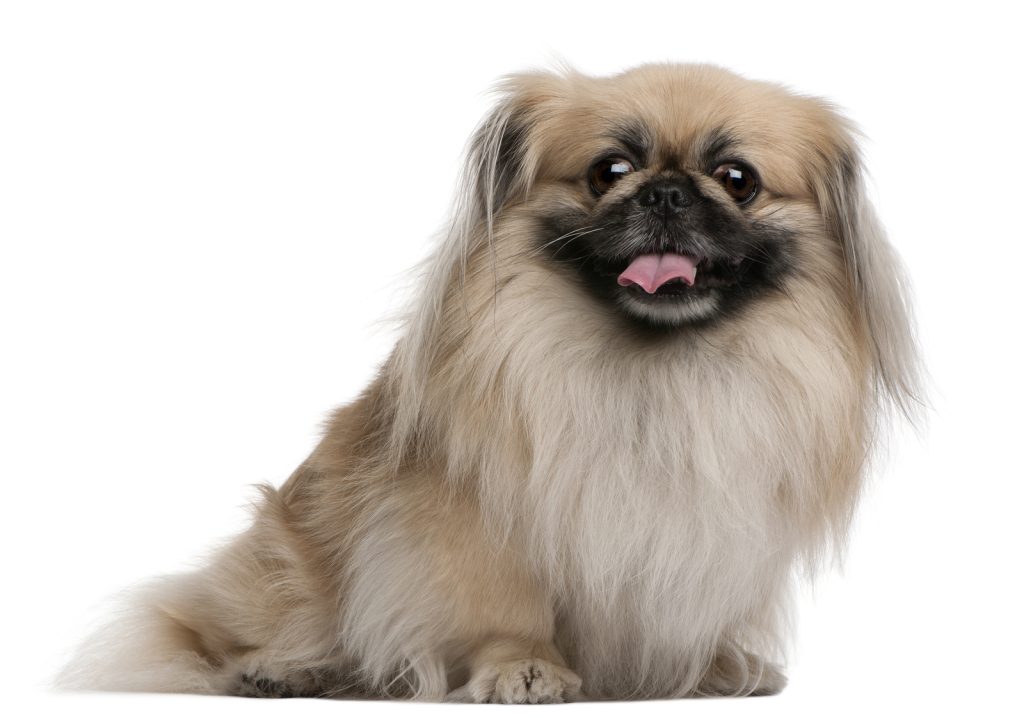
Size and Breed Category
The Pekingese is a small breed of dog that originated in China. They are classified as a toy breed, with an average weight of 3.2-6.4 kg and a height of 15-23 cm at the shoulder. Their body is compact and muscular, with a broad chest and a short, thick neck. The Pekingese has a distinctive flat face, with large, round eyes and a short, wrinkled muzzle. Their ears are long and feathered, and their tail is carried high over their back. The Pekingese has a thick, luxurious coat that comes in a variety of colours, including black, fawn, cream, and white. They are known for their regal appearance and dignified bearing.
As a toy breed, the Pekingese is well-suited to apartment living and does not require a lot of exercise. They are affectionate and loyal companions, but can be stubborn and independent at times. The Pekingese is a low-maintenance breed when it comes to grooming, but their thick coat does require regular brushing to prevent matting and tangling. They are generally healthy dogs, but can be prone to certain health issues such as eye problems and respiratory issues due to their flat face. Overall, the Pekingese is a charming and elegant breed that makes a wonderful companion for those who appreciate their unique personality and appearance.
Fur Length and Colour
The fur of a Pekingese is one of its most distinctive features. It is long and thick, with a soft and silky texture. The fur is particularly dense around the neck and shoulders, giving the dog a regal appearance. The fur on the legs and tail is also long and flowing, adding to the Pekingese’s elegant look. The fur can come in a variety of colours, including black, fawn, cream, and white. Some Pekingese have a mix of colours in their fur, such as black and white or fawn and white. The fur is often highlighted with darker tips, giving it a beautiful and unique appearance.
The length of a Pekingese’s fur can vary depending on the individual dog. Some Pekingese have shorter fur that is easier to maintain, while others have longer fur that requires more grooming. Regardless of the length, the fur of a Pekingese is always thick and luxurious. The fur is also quite dense, which helps to keep the dog warm in colder weather. Pekingese are known for their beautiful coats, and many owners take great pride in keeping their dog’s fur looking its best. Regular grooming is essential to keep the fur healthy and shiny, and many Pekingese owners enjoy spending time brushing and caring for their dog’s coat.
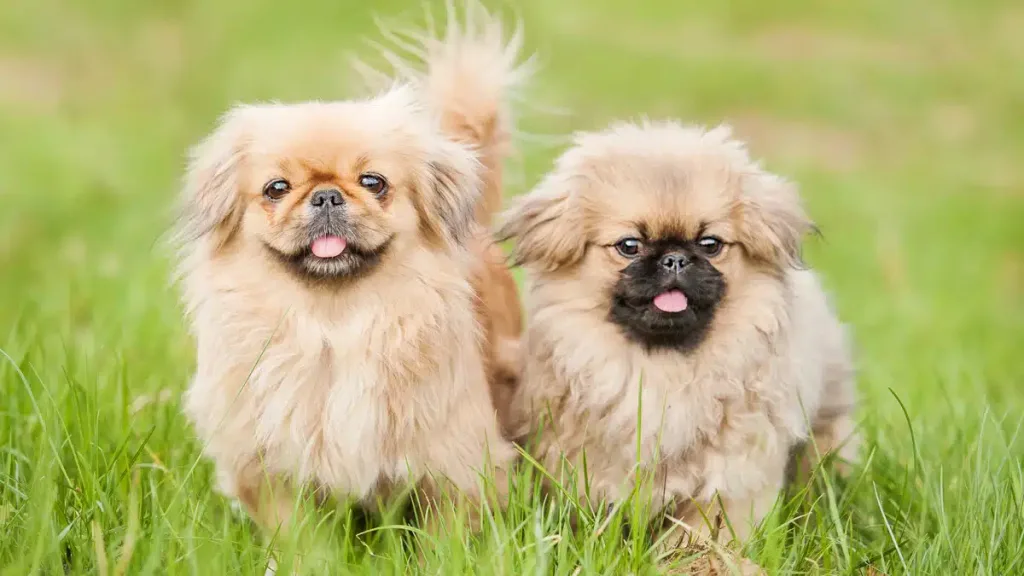
Termperament and Trainability
Pekingese dogs are known for their independent and stubborn temperament. They are not the easiest breed to train and require a patient and consistent approach. Pekingese can be quite aloof and reserved with strangers, but they are fiercely loyal to their owners. They are not typically very active dogs and prefer to spend their time lounging around the house. However, they do require daily exercise to maintain their health and prevent obesity. Pekingese are also known for their tendency to bark excessively, which can be a challenge to manage. Overall, Pekingese require an experienced and dedicated owner who is willing to put in the time and effort to train and socialize them properly.
Despite their stubborn nature, Pekingese can be trained with positive reinforcement methods. They respond well to treats and praise, but harsh training methods should be avoided as they can cause the dog to become fearful or aggressive. Pekingese are intelligent dogs and can learn a variety of tricks and commands, but they may not always choose to obey them. They have a strong sense of independence and may choose to ignore commands if they do not see the benefit in following them. Pekingese are also known for their sensitivity and can become easily stressed or anxious if they feel overwhelmed. It is important to provide them with a calm and stable environment to help them feel secure. With patience and consistency, Pekingese can make loving and loyal companions.
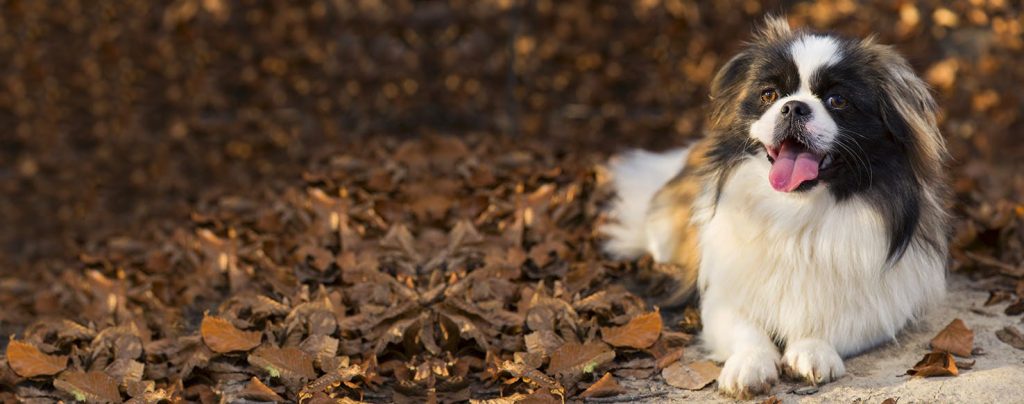
Known Health Conditions
Pekingese are prone to a number of health conditions, including respiratory problems. Due to their short snouts, they can experience difficulty breathing, especially in hot or humid weather. This can lead to snoring, wheezing, and even collapse. Pekingese may also suffer from eye problems, such as corneal ulcers and cataracts. Regular eye exams are important to catch and treat these issues early. Additionally, Pekingese are at risk for skin allergies and infections, which can cause itching, hair loss, and skin irritation. Proper grooming and regular veterinary check-ups can help prevent and manage these conditions.
Another common health concern for Pekingese is their susceptibility to dental problems. Their small mouths and crowded teeth can lead to tartar buildup, gum disease, and tooth loss. Regular dental cleanings and at-home dental care can help prevent these issues. Pekingese may also be prone to joint problems, such as luxating patellas and hip dysplasia. These conditions can cause pain, limping, and difficulty walking. Maintaining a healthy weight and providing low-impact exercise can help reduce the risk of joint problems. Regular veterinary check-ups and early intervention can also help manage these conditions.
Openness to Strangers
Pekingese dogs have a reputation for being cautious around strangers. They are not the type of dog to immediately run up to someone they don’t know and shower them with affection. Instead, they tend to observe new people from a distance before deciding whether or not to approach them. This can make them seem aloof or unfriendly, but it’s simply their way of assessing potential threats. Once a Pekingese has determined that a stranger is not a danger, they may become quite friendly and affectionate. However, it can take some time for them to warm up to new people.
Despite their initial wariness, Pekingese dogs can be quite sociable with those they know and trust. They are loyal and devoted to their families, and enjoy spending time with them. They are also known for being quite stubborn, which can make training a challenge. However, with patience and consistency, they can learn to follow commands and behave appropriately. Pekingese dogs are not typically recommended for families with young children, as they can be easily injured due to their small size. However, they can make great companions for older individuals or couples who are looking for a loyal and affectionate pet.
Playfulness Level
The Pekingese is a small and lively dog breed that is known for its playful nature. They are highly energetic and love to play with their owners, making them a great choice for families with children. Their playful nature is also evident in their love for toys, and they can often be found playing with balls, chew toys, and other objects around the house. Despite their small size, Pekingese are known for their high energy levels and can keep up with even the most active of families.
In addition to their love for play, Pekingese are also known for their mischievous nature. They are highly intelligent and can be quite cunning when it comes to getting what they want. This can sometimes lead to them getting into trouble, but their playful and affectionate nature makes it hard to stay mad at them for long. Overall, the Pekingese is a fun-loving and playful breed that is sure to bring joy and laughter to any household.
Suitability as a Pet for Children
Pekingese have a friendly and affectionate nature, making them a great choice as a pet for children. They are known for their loyalty and devotion to their owners, and are often described as being playful and lively. Pekingese are also relatively low-maintenance, requiring only moderate exercise and grooming. However, they can be stubborn at times and may require patience and consistent training. Overall, Pekingese can make wonderful companions for families with children who are willing to put in the effort to train and care for them properly.
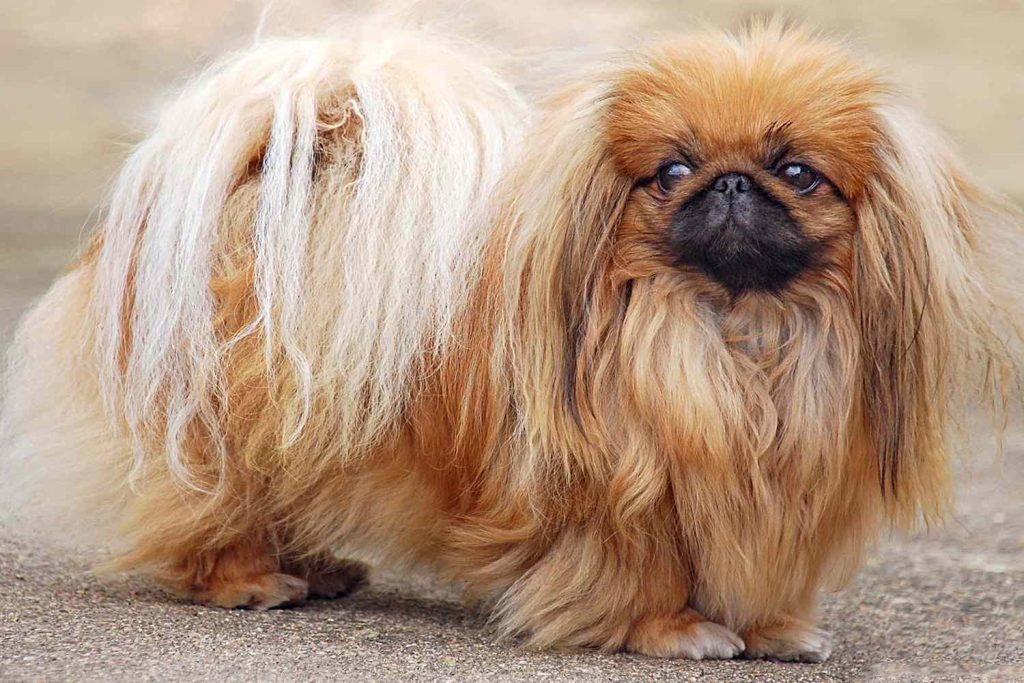
Exercise Needs
Pekingese require a moderate amount of exercise to maintain their health and wellbeing. As a small breed, they do not need extensive amounts of physical activity, but they do benefit from daily walks and playtime. A 30-minute walk each day is sufficient for most Pekingese, but they may enjoy longer walks or play sessions if they are up for it. It is important to monitor their activity levels and not over-exert them, as they are prone to respiratory issues and overheating. Additionally, mental stimulation is important for Pekingese, as they are intelligent dogs that enjoy learning new tricks and playing games with their owners.
While Pekingese do not require intense exercise, they do need regular activity to prevent obesity and maintain their overall health. In addition to daily walks, Pekingese can benefit from short training sessions and indoor playtime. Interactive toys and puzzles can provide mental stimulation and help prevent boredom, which can lead to destructive behavior. It is important to note that Pekingese are not well-suited for outdoor activities in extreme weather conditions, as they are sensitive to both heat and cold. Overall, Pekingese are a low-energy breed that can thrive with moderate exercise and mental stimulation.
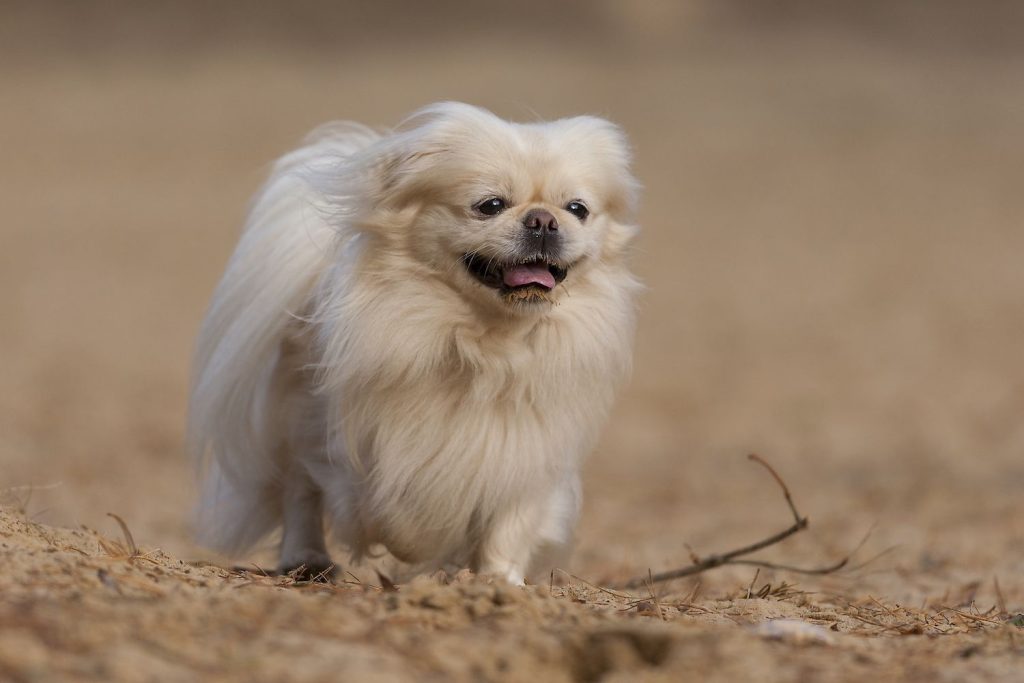
Suitability for a Multi-Pet Family
Pekingese dogs have a reputation for being territorial and possessive, which can sometimes lead to conflicts with other pets in the household. However, with proper socialization and training, they can learn to coexist peacefully with other animals. It is important to introduce them to other pets gradually and supervise their interactions to prevent any aggressive behavior. Additionally, providing each pet with their own space and resources can help minimize any potential conflicts.
Housing Requirements
Pekingese require a living space that is comfortable and safe. They need a warm and dry environment, with a temperature range of 18-22°C. The ideal living space for a Pekingese is a house with a garden, where they can play and exercise. However, they can also adapt to living in an apartment, as long as they have access to regular walks and outdoor activities. It is important to note that Pekingese are sensitive to extreme temperatures, so they should not be left outside for extended periods of time in hot or cold weather.
In terms of sleeping arrangements, Pekingese prefer a soft and comfortable bed, preferably with a blanket or cushion. They also require a quiet and peaceful sleeping environment, away from any loud noises or disturbances. It is important to keep their sleeping area clean and hygienic, as Pekingese are prone to skin allergies and infections. Additionally, Pekingese require regular grooming, including brushing and bathing, to maintain their long and thick coat. Overall, providing a comfortable and clean living space is essential for the health and well-being of a Pekingese.
Summary
Pekingese have a reputation for being loyal and affectionate companions. They are generally low-energy dogs, making them suitable for apartment living or for those who cannot provide a lot of exercise. However, they can be stubborn and difficult to train, so potential owners should be prepared to invest time and patience in their training. Additionally, their long coats require regular grooming to prevent matting and tangling. Overall, Pekingese can make great pets for those who are willing to put in the effort to train and care for them properly.
Pekingese Dog FAQS
Pekingese can be stubborn and difficult to train, but with patience and positive reinforcement, they can learn basic commands.
Pekingese are alert and protective of their owners, making them good watchdogs despite their small size.
Pekingese can be good with children if they are socialized properly and supervised during playtime.
Yes, Pekingese are well-suited for apartment living due to their small size and low exercise requirements.
Pekingese are prone to certain health issues such as eye problems, respiratory issues, and joint problems. Regular vet check-ups are recommended.
Yes, Pekingese shed a lot and require regular grooming to prevent matting and tangling of their fur.
Pekingese can live up to 12-15 years.
Pekingese only need moderate exercise, such as short walks or indoor playtime, due to their small size and short legs.
Pekingese only need to be bathed every 2-3 months, but regular brushing and grooming is necessary to maintain their coat.
The average weight of a Pekingese is between 3.2 to 6.4 kilograms.
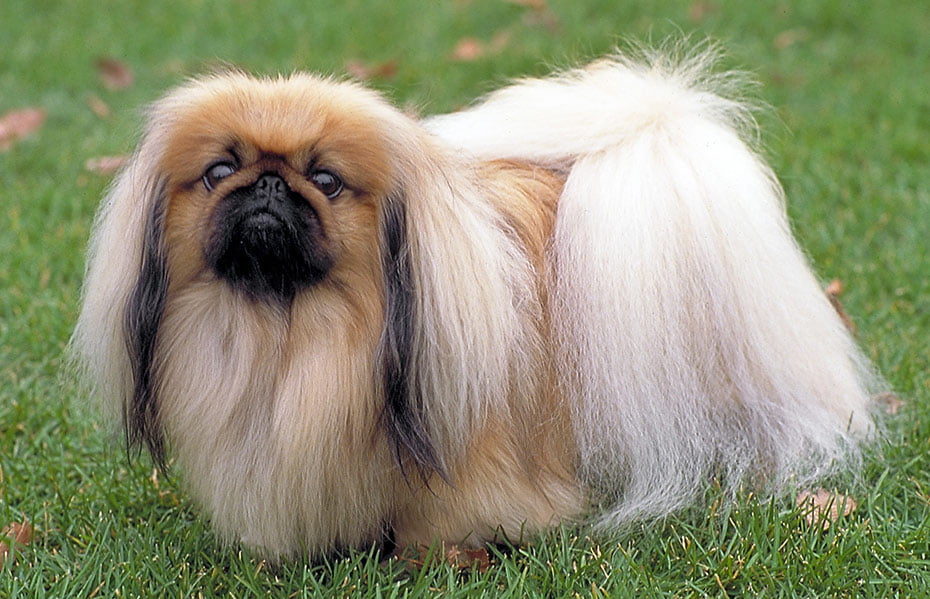
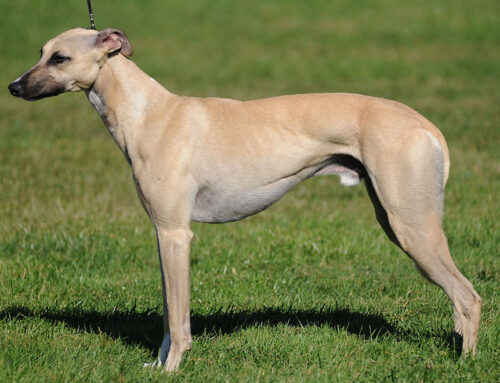
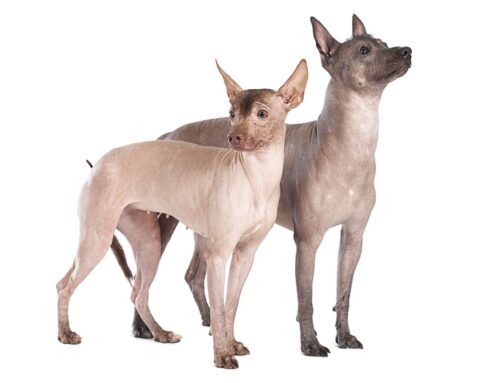
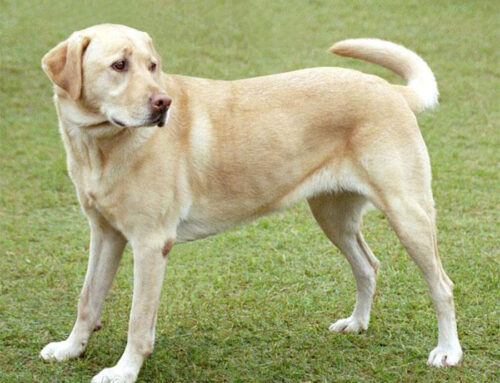
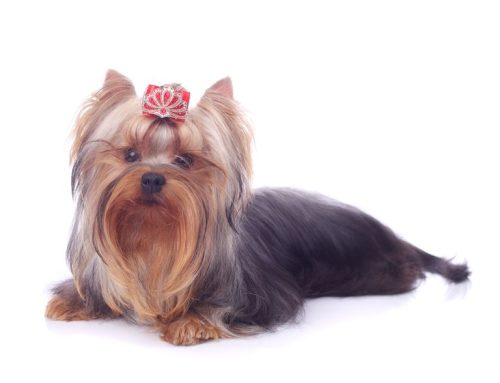
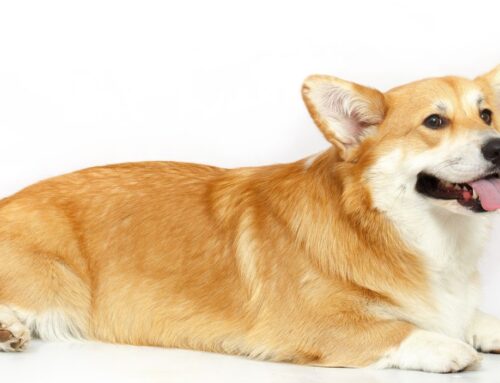
Leave A Comment